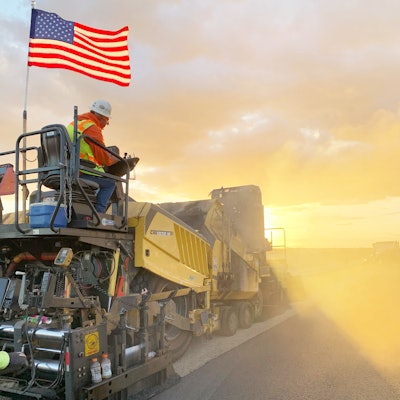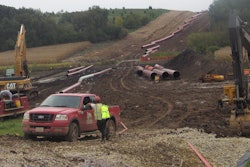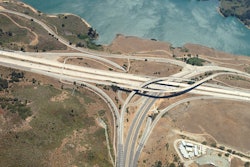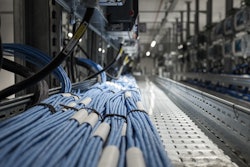
As discussions continue on the American Jobs Plan – which, if passed, will flood the nation with contracts for all manner of infrastructure jobs – contractors are readying themselves to scoop up as much of the incoming business as possible. In their excitement however, many construction businesses are neglecting the fact that they don't have the manpower or equipment they will need to complete these projects.
In order to not only compete with this influx of work, but succeed in completing these jobs, contractors are going to need to rethink how they hire, bid and work and technology will be key to that. According to a new survey, construction technology can provide a 15-20% cost reduction on road, bridge, airport, mass transit and other infrastructure construction projects. These tech products include machine automation, drones, cloud solutions to connect teams across job sites and more to stretch taxpayer dollars further on these infrastructure projects.
What's more is that embracing technology will eventually make you more money. McKinsey estimates that the most competitive and proactive stakeholders can unlock up to $265 billion in new profits. The time to act is now.
Head Count
According to recent data from the U.S. Chamber of Commerce, 88% of contractors surveyed report moderate to high levels of difficulty finding skilled workers and over one-third (35%) are turning down work due to the labor shortage. An insufficient number of workers will make it difficult to complete projects in a timely and cost-effective manner.
Here are some solutions for hiring and labor management:
While it's impossible to completely avoid the impact of a labor shortage that affects the entire industry, it's possible to combat this with innovative technological advances. More people may be inclined to join the industry if they understand that it is an environment that embraces technology.
Cash Flow
Estimating and project delivery issues are additional issues contractors need to be prepared to address. To gain and maintain public confidence, projects need to deliver the results that owners promise, within the timeframes they set. That means projects need to be completed more efficiently and cost-effectively.
Cost overrun is a common problem that construction companies experience for a number of reasons. Exceeding budgets and schedules are all too common: Nine in ten projects costing $1 billion or more go over budget, and transport construction projects are typically delayed by 2.3 years. While the construction industry generates billions of dollars every year, the costs can also be extraordinary and profits are historically thin. To help maximize profitability therefore, avoiding cost overrun is crucial.
Contractors are going to need to consider investing in estimating and bidding software that can manage the elements of project overruns. Here are a few technologies to do so:
A cloud-based project management solution is also necessary. According to Trimble, siloed processes and systems create a domino effect of miscommunication and inefficiencies. Rework, change orders, duplicate models and manual data entry drastically impact profitability. Rework accounts for an average of 12.4% of the total cost of infrastructure projects, according to the Construction Industry Institute.
We list a few construction project management platforms to help you streamline your operations:
By taking the proper steps to put a sufficient project budget in place and automate various processes, construction companies can effectively avoid cost overrun. When project owners identify inefficiencies and address them with appropriate solutions, they are more likely to stay within their budgets and maintain cost-effective operations.
On-Site Technology
Between the pandemic, mounting climate concerns and the rapid, ongoing digitization of society, the stakeholders involved in building and operating America’s road and bridges can no longer resist change. There are many ways to work smarter, not harder in order to complete the work that will be required of our industry.
Here are some solutions for increasing productivity on road building jobsites:
- BOMAG BOMAP Connect
- Trimble 3D RoadWorks
- Witos for Paving
- Caterpillar eRoutes Mobile App
- Topcon PaveLink App
You have an opportunity right now. A refusal to adapt to accommodate this influx of work will worsen performance, while developing new business and operating models could allow companies to generate more value and profit. The choice is yours.




















